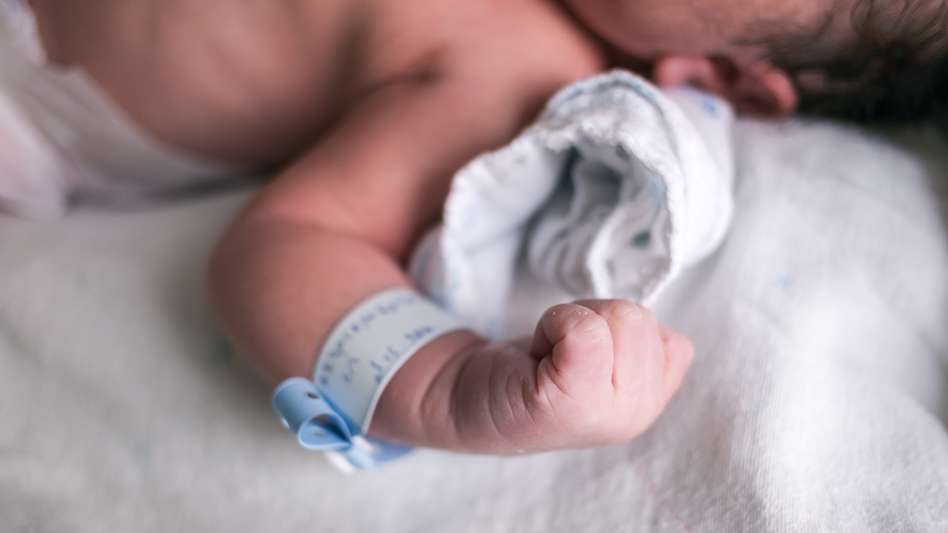medical negligence
Cerebral palsy medical negligence cases: how Tees can help

Babies can be born with cerebral palsy despite the highest level of antenatal and obstetric care. Sadly, in some cerebral palsy medical negligence cases babies suffer severe injury at the hands of those entrusted to keep mothers safe and well throughout their pregnancy and delivery. Failure to recognise signs of fetal distress can lead to delays in a situation where every minute matters.
Cerebral palsy medical negligence cases handled by Tees
Cerebral palsy in labour: How a healthy pregnancy ends in a cerebral palsy medical negligence case
Detecting cerebral palsy and brain damage after birth
Cerebral palsy medical negligence cases: The court process
Cerebral palsy compensation achieved
Free expert medical negligence advice
Cerebral palsy medical negligence cases handled by Tees
Here we outline two ongoing cerebral palsy medical negligence cases in which our medical negligence lawyers are supporting two severely disabled children and their families, working to ensure they receive the lifetime security they require.
Liam Baker* and Kayleigh Smith* were born several months apart in 2006, to mothers attending two separate hospitals. Both were left with severe physical disabilities - 5 on the GMFCS (Gross Motor Function Classification System) and brain damage. Liam is tube fed and wholly dependent on others for support and care, whilst Kayleigh also has limited vision. Both suffer from severe epilepsy and seizures and are treated with anticonvulsants, to varying degrees of success.
Cerebral palsy in labour: How a healthy pregnancy ends in a cerebral palsy medical negligence case
Hannah Baker* and Tracy Smith* both experienced unremarkable pregnancies; it was Hannah’s first baby.
Meanwhile, Tracy had a history of recurrent miscarriages; she already had one child who had been delivered by emergency caesarean section due to fetal distress.
Both had regular antenatal check-ups, each attending the clinic once due to concern over limited fetal movement. Both mothers were reassured by normal cardiotocograph (CTG) readings. Hannah and Tracy were in good health.
When the mothers went into labour, they attended the delivery suite of their respective hospitals. Hannah was full-term, while Tracy went into labour two months early. It is here that failing were identified by looking at the evidence, with detailed reference to the mothers’ medical notes and in consultation with carefully researched and highly reputed independent midwives and obstetric experts.
Cerebral palsy causes
The importance of fetal heart monitoring
During pregnancy, it is extremely important to closely monitor the baby’s heart rate, as it is a good indication of whether a pregnancy is progressing as it should and can provide early warning signs that something is wrong.
A baby’s heart rate should be between 110 and 160 beats per minute (bpm). Anything under this is called bradycardia, while anything above the normal limits is known as tachycardia. An abnormal heart rate can indicate that the baby is in distress and not getting enough oxygen.
Fetal heart monitoring was judged by our medical experts to have been insufficient in both cases.
When they were admitted to the delivery suite, both Hannah and Tracy were provided with electronic fetal monitoring, which delivered constant CTG readings. However, this was discontinued for both mothers after about half an hour to allow them to be mobile.
National Institute for Health and Care Excellence (NICE) guidelines stipulate that, if a mother is not being continuously monitored, then a midwife must perform auscultations (i.e., listen to the heart rate with a stethoscope or other tool) at least every 15 minutes, for at least 60 seconds. However, Hannah’s medical notes show frequent half-hourly intervals between auscultations. This is despite her complaining of severe lower abdominal pain in addition to her contractions, which can be a sign of placental abruption (where the placenta comes away from the uterine wall before or during birth, resulting in bleeding and preventing oxygen from reaching the baby’s brain). By the time the CTG trace was restarted, Liam’s heart rate was just 80bpm and he was clearly in distress.
Tracy also came to hospital with severe lower abdominal and lower back pain and had been sick several times. Our medical experts considered Tracy’s initial CTG trace and found it to be abnormal, meaning that the trace should never have been discontinued. Even if it had been normal, her history of miscarriages and a previous traumatic birth should have been a trigger for continuous monitoring. It was two hours before she was reviewed by a member of the medical staff, who ordered that the CTG trace should be restarted. Even then, it was 40 minutes before electronic monitoring restarted; this trace was clearly pathological and showed evidence of significant hypoxia (a lack of oxygen to the brain) and tachycardia.
Tracy then waited for half an hour for a Registrar to review it and it was another hour before birth was achieved in theatre. Independent evidence was of the view that the delivery should have been much earlier which would have avoided the brain damage.
Detecting cerebral palsy and brain damage after birth
When Liam and Kayleigh were born, they both had low Apgar scores (which describes the condition of a newborn baby, including breathing, muscle tone and any other indication that the baby may need additional care).
Kayleigh was described as being floppy and struggling to breathe, while Liam required active resuscitation and was on a ventilator in the days following his birth. Both were subsequently determined to have suffered acute hypoxic ischaemic encephalopathy (HIE) – a type of brain damage that occurs when the brain doesn’t receive adequate oxygen or blood flow for a period of time.
Cerebral palsy medical negligence cases: The court process
After gathering all the evidence, including reports from the independent medical experts, our solicitors then instructed a barrister. Each family gave statements, while both the independent medical experts instructed by the family and Hospitals, closely considered all of the issues. This included determining when and how Liam and Kayleigh’s brain damage occurred, whether this damage could have been avoided with earlier alternative care and, if so, when the two babies should have been born and whether their delivery could have been brought forward.
Cerebral palsy compensation achieved
While neither case has concluded, liability has been resolved and the next stage will be to determine the level of compensation to be awarded, which is expected to extend to £multi-million range in order to cater for both Liam’s and Kayleigh’s lifelong needs, and optimise their quality of life with support.
Free expert medical negligence advice
Our top tier medical negligence solicitors are devoted to achieving the support our clients and families need.
If you or your family has been affected by potential concerns regarding your medical care, we can support you on your journey.
Come in for a free, confidential, no obligation chat, or fill out our enquiry form and we will let you know how we can help. We can also visit you at your home if you wish.
Our medical negligence lawyers are based in:
- Cambridgeshire: Cambridge
- Essex: Brentwood, Chelmsford and Saffron Walden
- Hertfordshire: Bishop's Stortford & Royston
But we can help you wherever you are in England and Wales.
Find out how we can help with cerebral palsy claims.
Chat to the Author, Tim Deeming
Partner, Medical Negligence, Cambridge office
Meet Tim
- Areas of expertise
- Accreditations
- Testimonials
Anonymous
Cambridge
'I am very grateful to Tim not least because I feel vindicated in bringing a case of medical negligence against my defendants. I now know that my care was more substandard than I previously had realised. Clearly, I am also relieved to be awarded the means to provide for my future care needs'
Anonymous
Cambridge
'I found Tim to be very kind, empathetic, unflappable, thorough, proactive and a good communicator. He guided and supported me through this not so pleasant journey, making it as bearable as possible'
Anonymous
Cambridge
'I approached Tim with a certain issue, but with careful probing, it became clear that I had more than one grievance'
Mr T
Cambridge
'From initial contact through to settlement, the Tees Law team in Cambridge provided a professional and compassionate service. I was ably guided and provided with timely well considered advice that has ultimately led to a settlement in line with my expectations – thank you Sophie Stuart and Tim Deeming'
Legal 500 UK 2023
'Tim Deeming was the partner we dealt with, and he was always available to answer any questions or issues we had. He guided us through the minefield of two inquests, mediation, and always with a sensitive approach to our feelings. He was outstanding in his advice and also realistic which was very important as to the expectations of the legal process. Finally he was encouraging when we had to give evidence and was always on hand to help with statements and any evidence we needed to provide'
Legal 500 UK 2021
"Tim Deeming is supportive, friendly, knowledgeable, willing and comforting. I feel protected in his care."
Legal 500 UK 2021
"Tim Deeming has been outstanding for me. This has been a very personal, emotional and challenging event for me. I know that Tees are a business, but I’ve only ever felt like an individual; one who matters, one who deserves fair treatment."
Mr and Mrs Robin Lincoln
Bishop's Stortford
Tim Deeming took me through the settlement process step by step and was a master tactician in the final negotiation, who I was proud to have represent me. Katheryn Riggs gave me all the support to file the claim. Tees draw on their vast experience to bring the very best medical experts to the table.



